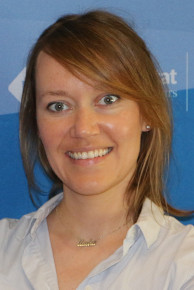July 14, 2023
VIBASS6 - Invited Talks
Construction of flexible distributions using copulas
This talk introduces copulas as a very useful statistical tool to model complex joint dependencies. Copulas allow the researcher to define separately the individual marginal densities from their dependence structure. This provides a much greater degree of flexibility in specifying different multivariate distributions or constructing non-linear dynamics for time series processes. We will review the main parametric copula families including the Archimedean family and the Elliptical copulas. Some of them are especially useful in capturing the dependence in the tails of the distribution. This can be particularly beneficial in many situations such as financial crises, where tail dependencies are usually more relevant than the overall correlations. We will see two very different examples of applications of copula functions in a financial time series context: first, in capturing non-linear non-Gaussian time varying co-dependence between a pair of financial returns; and second, in constructing non-linear time series dynamics for the volatility of some financial asset. In both cases, due to the latent nature of the process of interest and/or non-tractable likelihood, we rely on alternative Bayesian estimation strategies, such as Density Tempered Sequential Monte Carlo (DTSMC) and Approximate Bayesian Computation (ABC).

Prof. Audrone Virbickaite CUNEF Universidad, Spain https://www.cunef.edu/en/claustro/virbickaite-audrone/
Modelling spatio-temporal variation in disease risk: Its not all about geographical adjacency
Population-level disease risk varies between different communities as well as over time, which is due to spatio-temporal variation in both environmental (e.g. air pollution) and social (e.g. socio-economic deprivation) exposures. Quantifying this spatio-temporal variation informs public health policy, as it enables health agencies to: (i) identify the locations of high-risk sub-regions; (ii) quantify the changing nature of health inequalities; and (iii) estimate the effects of a range of “exposures” on the health of society. These inferences are typically based on non-disclosive spatially aggregated summary data relating to the disease incidence among the populations living in a set of non-overlapping areal units, because individual-level data on disease incidence are typically not available for confidentiality reasons. Modelling and drawing inferences from these spatially aggregated disease data is known as “disease mapping”, and the disease risks in geographically neighbouring areal units are typically similar. This spatial autocorrelation in disease risk is typically captured by a set of spatially autocorrelated random effects within a Bayesian hierarchical model, with inference using either Markov chain Monte Carlo simulation or integrated nested Laplace approximations. However, the assumption underlying these models that all pairs of neighbouring areas have similar disease risks is unrealistic in many urban settings, because disease risk surfaces are likely to contain locations exhibiting steep risk gradients that are known as risk boundaries. Such boundaries may reflect the border where two different communities meet, and result in two neighbouring areas having very different disease risks. This talk gives an overview of how spatio-temporal disease risk models can be altered to identify these risk boundaries, illustrates the loss in estimation accuracy when their presence is ignored, and presents a new approach to identifying them using a fusion of statistical spatial realignment models and edge detection algorithms from the field of computer vision.

Prof. Duncan Lee University of Glasgow, Scotland https://www.gla.ac.uk/schools/mathematicsstatistics/staff/duncanlee/
EVENTS





